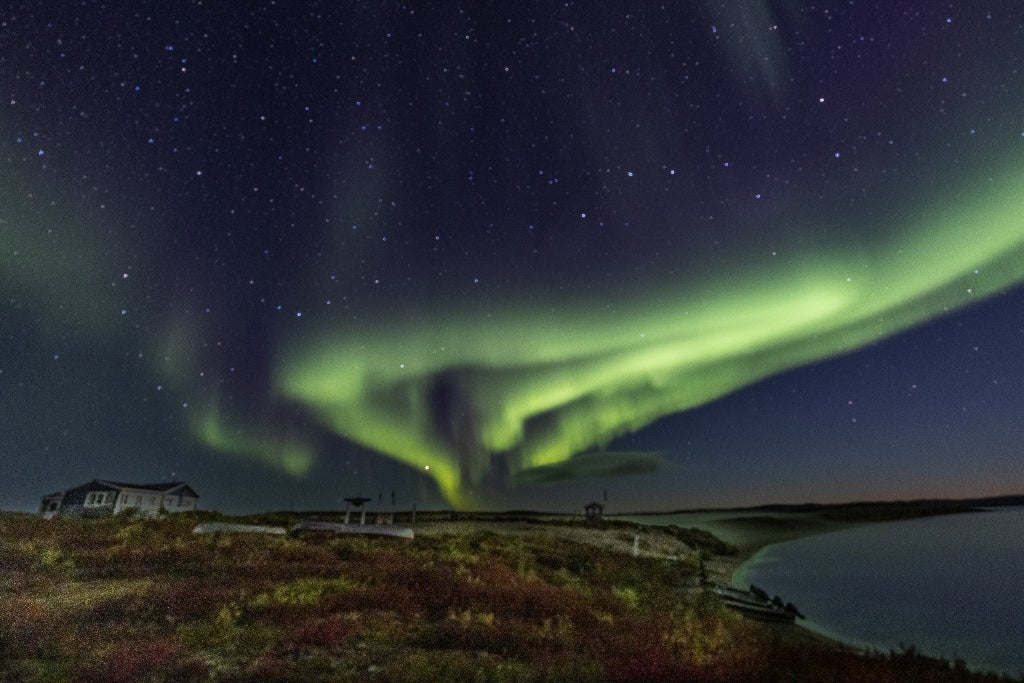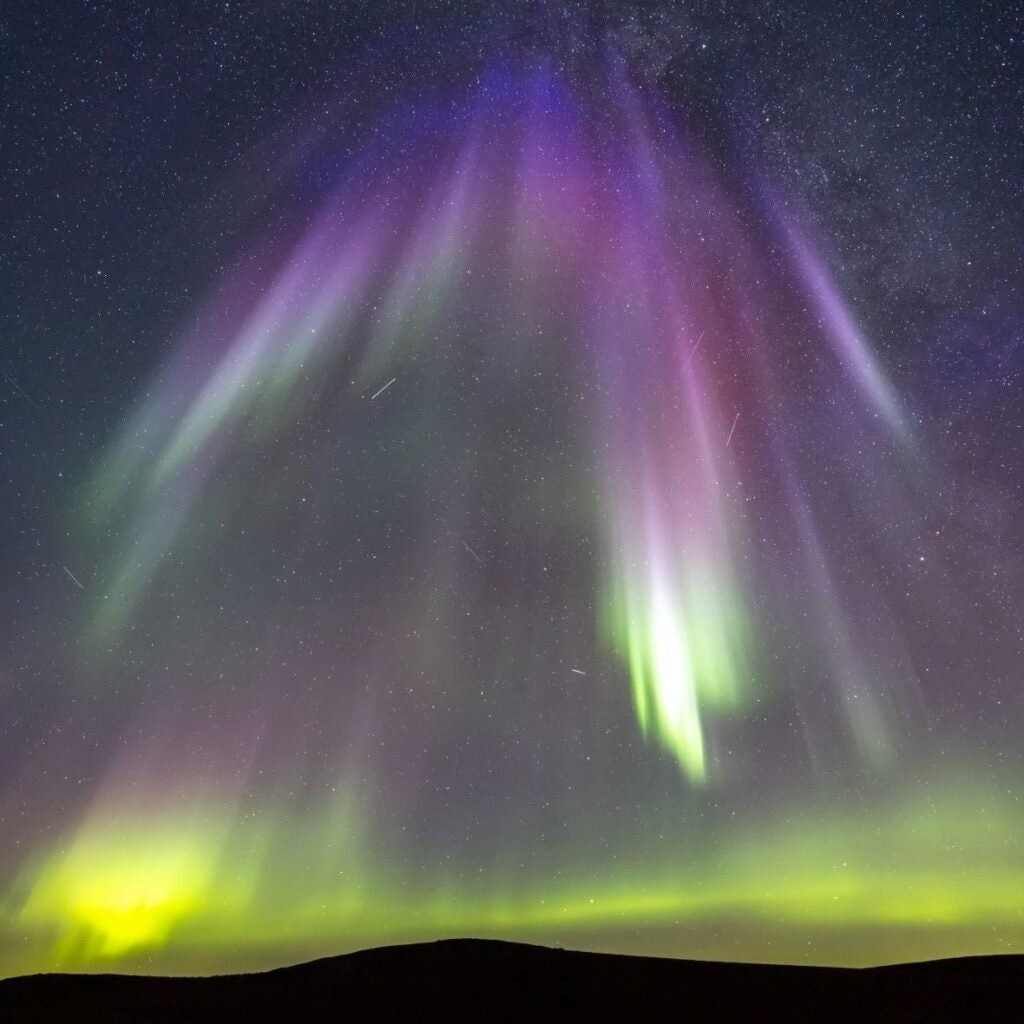Nature’s Dazzling Light Show – The Northern Lights
The Northern Lights, or Aurora Borealis, are among the most enchanting natural spectacles on Earth. These shimmering curtains of color, dancing across the night sky, have captivated human imagination for centuries. Understanding what causes these lights to appear, and the factors that influence their varying appearances, offers a deeper appreciation of their beauty. This article explores the fascinating science behind the Northern Lights.

Where Do the Northern Lights Come From?
The Northern Lights are the result of fast moving highly charged particles emitted from the sun. These particles, primarily electrons and protons make up the solar wind. They travel incredibly fast—up to 800 kilometers per second! When they reach Earth, they collide with our planet’s magnetic field.
Earth’s magnetic field usually protects us from these charged particles, but near the North and South Poles, the magnetic field is weaker allowing some of the particles slip through and enter the Earth’s atmosphere. When these particles bump into gases in the atmosphere, they become excited and create the beautiful lights in the sky we see as the aurora borealis.
Every so often bursts of plasma erupt from the sun in events called solar flares or coronal mass ejections (CME’s) where billions of particles and energy are released. These solar storms are extra special as they typically result in more intense, vivid and long-lasting displays of the northern lights. These storms sometimes result in the aurora extending to southern latitudes.
There are many resources and apps, such as My Aurora Forecast, that provide aurora forecasts and offer alerts. In Yellowknife we have our very own thanks to dedicated aurora and astronomy enthusiast James Puglsey who started astrononmynorth.com 20 years ago, James was also involved in the Northern Lighthouse Project and AuroraMax.
Why Are the Northern Lights Different Colors?
One of the most magical aspects of the Northern Lights is their array of colors. But why do the lights sometimes appear green, other times red, or even blue and purple?
The color of the Northern Lights depends on two main things: the type of gas the particles are colliding with and the altitude where these collisions occur.
- Green aurora: This is the most common color and is produced when the solar particles collide with oxygen at lower altitudes (about 100 to 300 kilometers above Earth).
- Red aurora: Is produced from oxygen at high altitudes (above 300 kilometers) It’s rarer than green.
- Magenta: can be produced by both low and high altitude molecular nitrogen.
- Purple aurora: occurs when solar particles interact with nitrogen. Hints of blue aurora have also been seen and they are reported only to be associated at lower altitudes, while purple occurs at higher levels.

Sometimes, you might even see a mix of colors, which happens when particles interact with both oxygen and nitrogen at different altitudes.
Why Do Some People See White Auroras?
Not everyone sees the Northern Lights in the same way. While most people report seeing green auroras, some might describe them as white or grayish. This difference comes down to how our eyes work in low light.
Our eyes have two types of cells that help us see: rods and cones. Rods are more sensitive and help us see in the dark, but they don’t detect color very well. Cones detect color but need more light to work effectively. So, in the low-light conditions typical of aurora viewing, some people’s rods might dominate, making the auroras appear white or gray rather than colorful.
The Role of the Solar Cycle: Solar Maximum and Solar Minimum
The sun goes through an 11-year sunspot cycle, which affects the frequency and intensity of the Northern Lights. This cycle includes periods called solar maximum and solar minimum.
- Solar Maximum: During this phase, the sun is more active, with more solar flares and coronal mass ejections. This means more charged particles are sent towards Earth, increasing the chances of seeing bright and frequent Northern Lights.
- Solar Minimum: In this quieter phase, the sun produces fewer charged particles, so auroras might be less frequent. However, it’s important to note that this doesn’t mean the Northern Lights disappear. Even during solar minimum, places under the auroral oval, a region around the magnetic poles, still experience regular auroras.
What is the Auroral Oval?
The auroral oval is a sweet spot for aurora activity. When viewed from space is seen as a bright crown of light circling the polar region of the Earth, Yellowknife and Peterson’s Point Lake Lodge lie under the Auroral Oval. So, you don’t need to wait for solar maximum to view the Northern Lights, you have a great chance of seeing the Northern Lights no matter where the sun is in its cycle.
Experience the Northern Lights at Peterson’s Point Lake Lodge
If you’re dreaming of witnessing the Northern Lights, there’s no better place than Peterson’s Point Lake Lodge. Nestled under the auroral oval in Canada’s Northwest Territories, our remote and peaceful lodge offers some of the best opportunities to see the Northern Lights.
Here you can experience the magic of the aurora borealis in a remote wilderness setting that’s as beautiful as the lights themselves. See the magical display of the northern lights dance in the night sky during one of our guided tours, come for a 5-night trip during our Arctic Photography Workshop or a 3-night trip during our Aurora Experience or, combine the both trips for a 8-night stay. It’s the perfect base for your aurora adventure.
Discover the wonders of the Northern Lights and create memories that will last a lifetime at Peterson’s Point Lake Lodge. The magic of the aurora awaits you!

October 9, 2024
